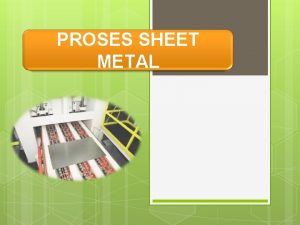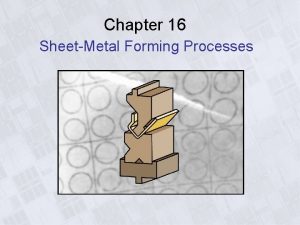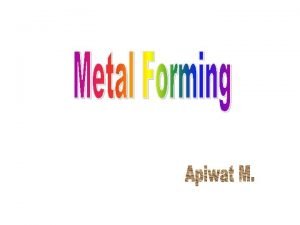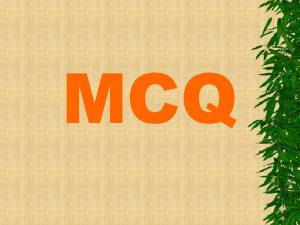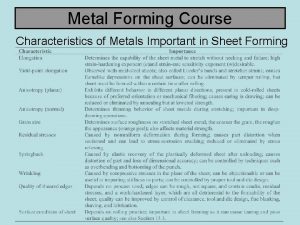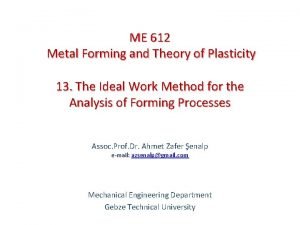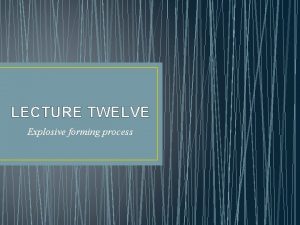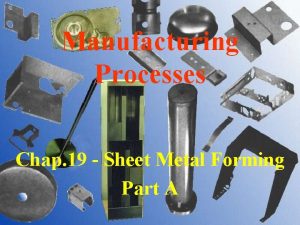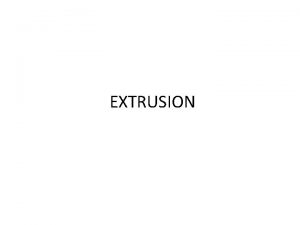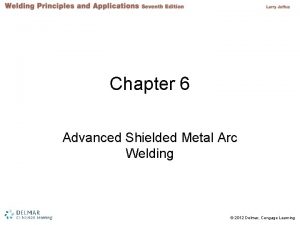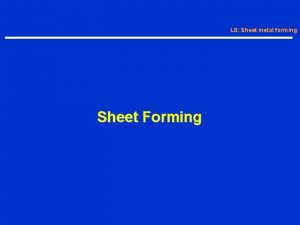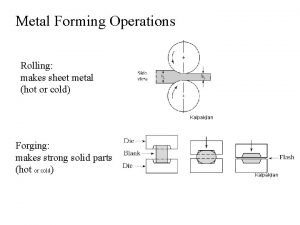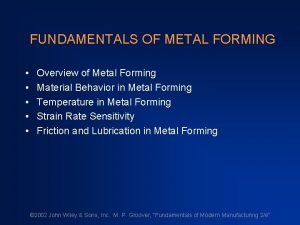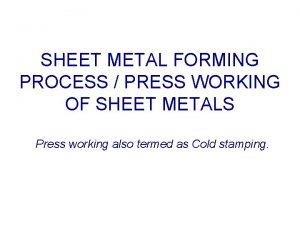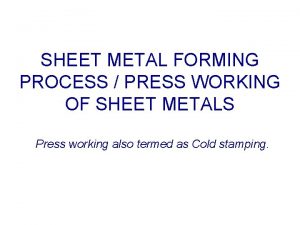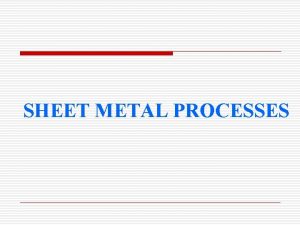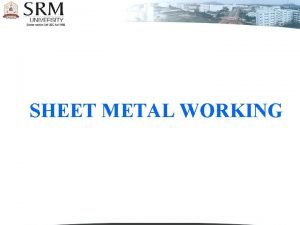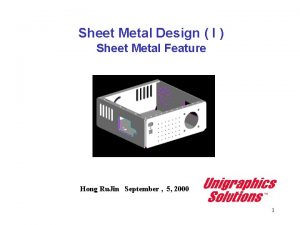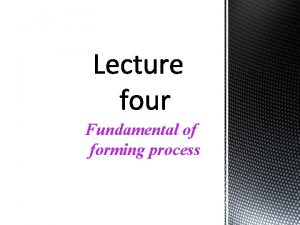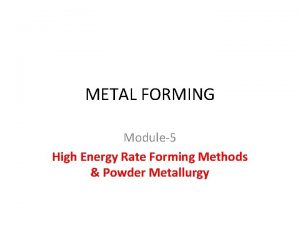Advanced Forming Sheet metal operations not performed on















- Slides: 15

Advanced Forming Sheet metal operations not performed on presses Apiwat Muttamara

Roll Forming Figure 16. 26 Schematic illustration of the roll-forming process.

Stretch Forming Figure 16. 30 Schematic illustration of a stretch-forming process. Aluminum skins for aircraft can be made by this method. Source: Cyril Bath Co.

Tube Bending Figure 16. 27 Methods of bending tubes. Internal mandrels, or the filling of tubes with particulate materials such as sand, are often necessary to prevent collapse of the tubes during bending. Solid rods and structural shapes can also be bent by these techniques.

Manufacturing of Bellows Figure 16. 29 Steps in manufacturing a bellows.

Bulging Figure 16. 28 (a) The bulging of a tubular part with a flexible plug. Water pitchers can be made by this method. (b) Production of fittings for plumbing, by expanding tubular blanks under internal pressure. The bottomof the piece is then punched out to produce a "T. " Source: J. A. Schey, Introduction to Manufacturing Processes (2 d ed. )

Rubber Forming Process Figure 16. 39 a) The ram descends, the rubber gradually surrounds the sheet. The form block can be made of wood plastic or other materials that are easy to shape.

Hydroform Process Figure 16. 39 The hydroform (or fluid forming) process. Note that, in contrast to the ordinary deep-drawing process, the pressure in the dome forces the cup walls against the punch. The cup travels with the punch; in this way, deep drawability is improved.

Conventional Spinning Figure 16. 40 (a) Schematic illustration of the conventional spinning process. (b) Types of parts conventionally spun. All parts are axisymmetric.

Figure 16. 41 Shear and Tube Spinning (a) Schematic illustration of the shear spinning process for making conical parts. The mandrel can be shaped so that curvilinear parts can be spun. (b) Schematic illustration of the tube spinning process.

Explosive Forming Figure 16. 44 (a) Schematic illustration of the explosive forming process. (b) Illustration of the confined method of explosive bulging of tubes.

Magnetic-Pulse Forming (a) (b) Figure 16. 45 (a) Schematic illustration of the magnetic-pulse forming process used to form a tube over a plug. (b) Aluminum tube collapsed over a hexagonal plug by the magnetic-pulse forming process.

Cost Comparison for Spinning and Deep Drawing Figure 16. 48 Cost comparison for manufacturing a round sheet-metal container either by conventional spinning or by deep drawing. Note that for small quantities, spinning is more economical.

Laser Welding Production of an outer side panel of a car body, by laser butt-welding and stamping. Source: After M. Geiger and T. Nakagawa.

Characteristics of Sheet-Metal Forming Processes
 Proses metal forming
Proses metal forming Forming process in sheet metal
Forming process in sheet metal Wholesale cold forming metal
Wholesale cold forming metal Casting forming and welding mcq
Casting forming and welding mcq Guerin bending process
Guerin bending process Hot hot
Hot hot Draw bead
Draw bead Metal forming analysis gtu
Metal forming analysis gtu Advantages of explosive forming
Advantages of explosive forming Slitting and shearing
Slitting and shearing Fundamentals of metal forming
Fundamentals of metal forming Barrel corrugated roll forming machine
Barrel corrugated roll forming machine In what situation should nail service not be performed
In what situation should nail service not be performed Chapter 6 advanced shielded metal arc welding
Chapter 6 advanced shielded metal arc welding Sadlier vocabulary workshop level d unit 1
Sadlier vocabulary workshop level d unit 1 Solid liquid and gas venn diagram
Solid liquid and gas venn diagram
